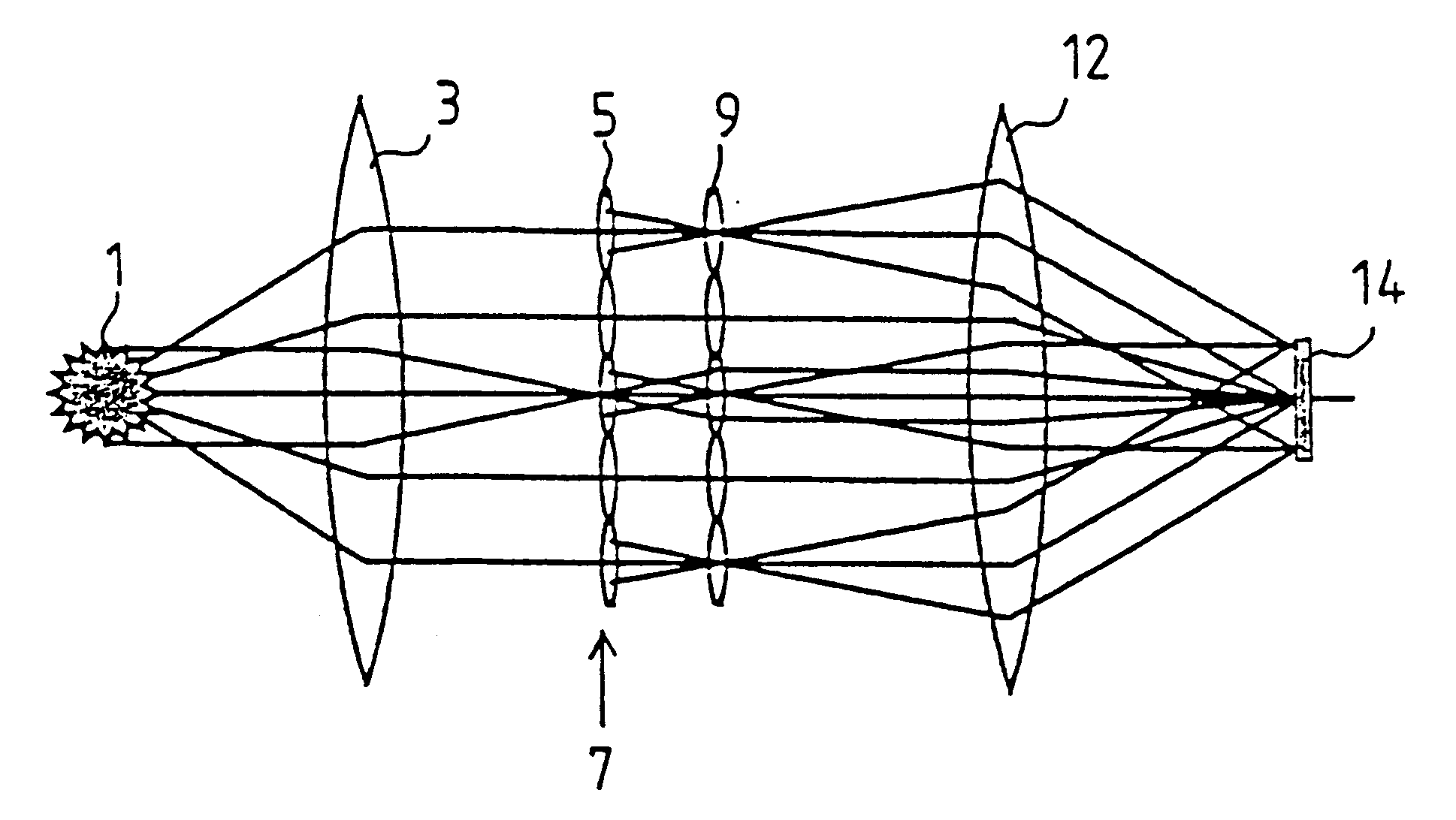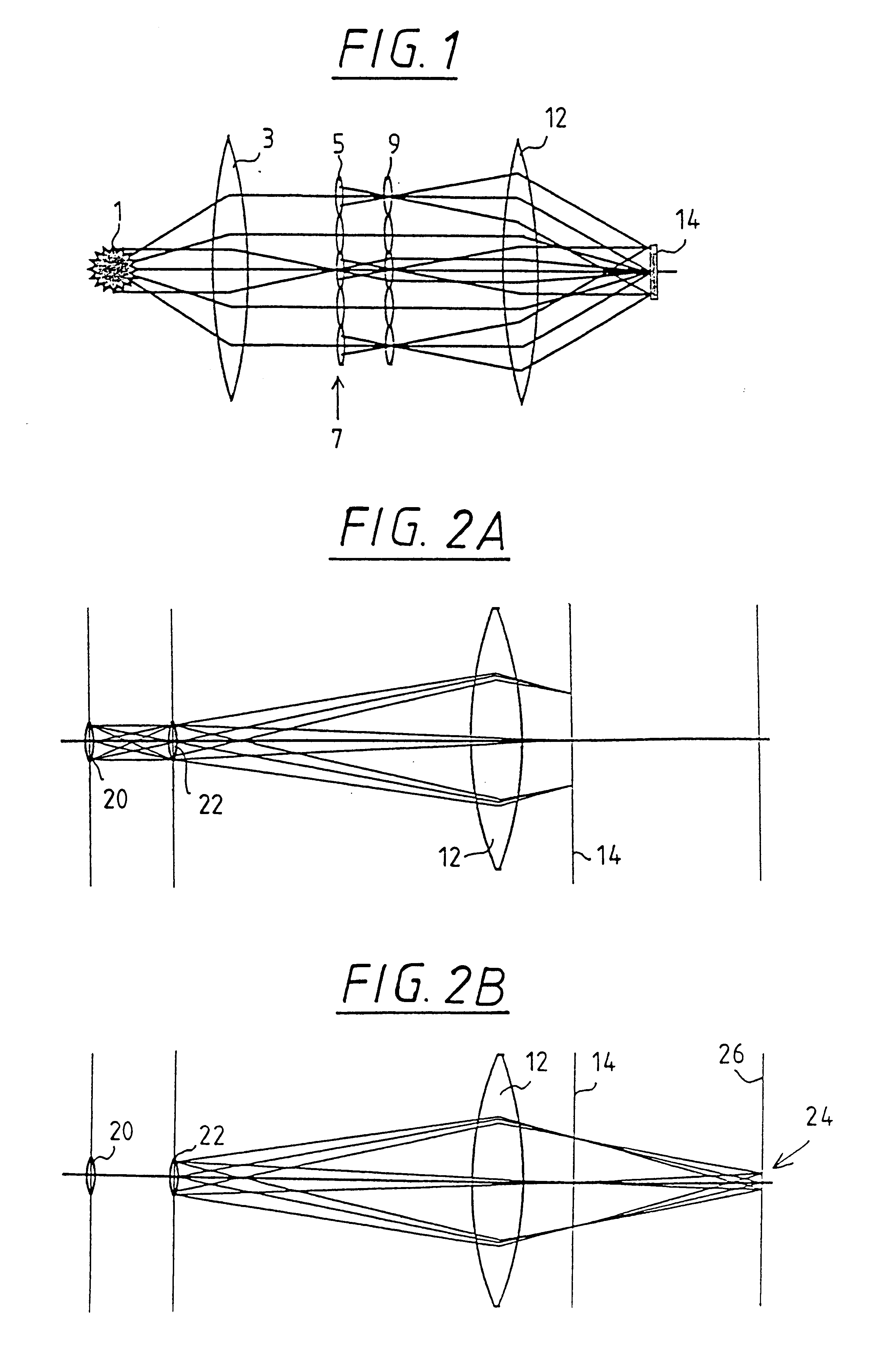Illumination system particularly for EUV lithography
a technology of euv lithography and lithography, which is applied in the direction of lighting and heating equipment, instruments, and handling using diaphragms/collimeters, etc., can solve the problems of synchrotron radiation interference effects
- Summary
- Abstract
- Description
- Claims
- Application Information
AI Technical Summary
Benefits of technology
Problems solved by technology
Method used
Image
Examples
Embodiment Construction
It shall be shown theoretically on the basis of FIGS. 1-20, how, with the help of the design process according to the invention and the illumination device according to the invention, a system can be provided for any desired illumination distributions A in a plane, which satisfies the requirements with reference to uniformity and telecentry.
In FIG. 1, a principle diagram of the beam path of a system with two honeycomb plates is illustrated. The light of source 1 is collected by means of a collector lens 3 and converted into a parallel or convergent pencil beam. The field honeycombs 5 of the first honeycomb plate 7 decompose the light pencil and produce secondary light sources at the site of the pupil honeycombs 9. The field lens 12 forms these secondary sources in the exit pupil of the illumination system or the entrance pupil of the subsequent objective. Such an arrangement is characterized by an interlinked beam path of field and pupil planes from the source up to the entrance pup...
PUM
| Property | Measurement | Unit |
|---|---|---|
| wavelengths | aaaaa | aaaaa |
| distance | aaaaa | aaaaa |
| wavelengths | aaaaa | aaaaa |
Abstract
Description
Claims
Application Information
 Login to View More
Login to View More - R&D
- Intellectual Property
- Life Sciences
- Materials
- Tech Scout
- Unparalleled Data Quality
- Higher Quality Content
- 60% Fewer Hallucinations
Browse by: Latest US Patents, China's latest patents, Technical Efficacy Thesaurus, Application Domain, Technology Topic, Popular Technical Reports.
© 2025 PatSnap. All rights reserved.Legal|Privacy policy|Modern Slavery Act Transparency Statement|Sitemap|About US| Contact US: help@patsnap.com



